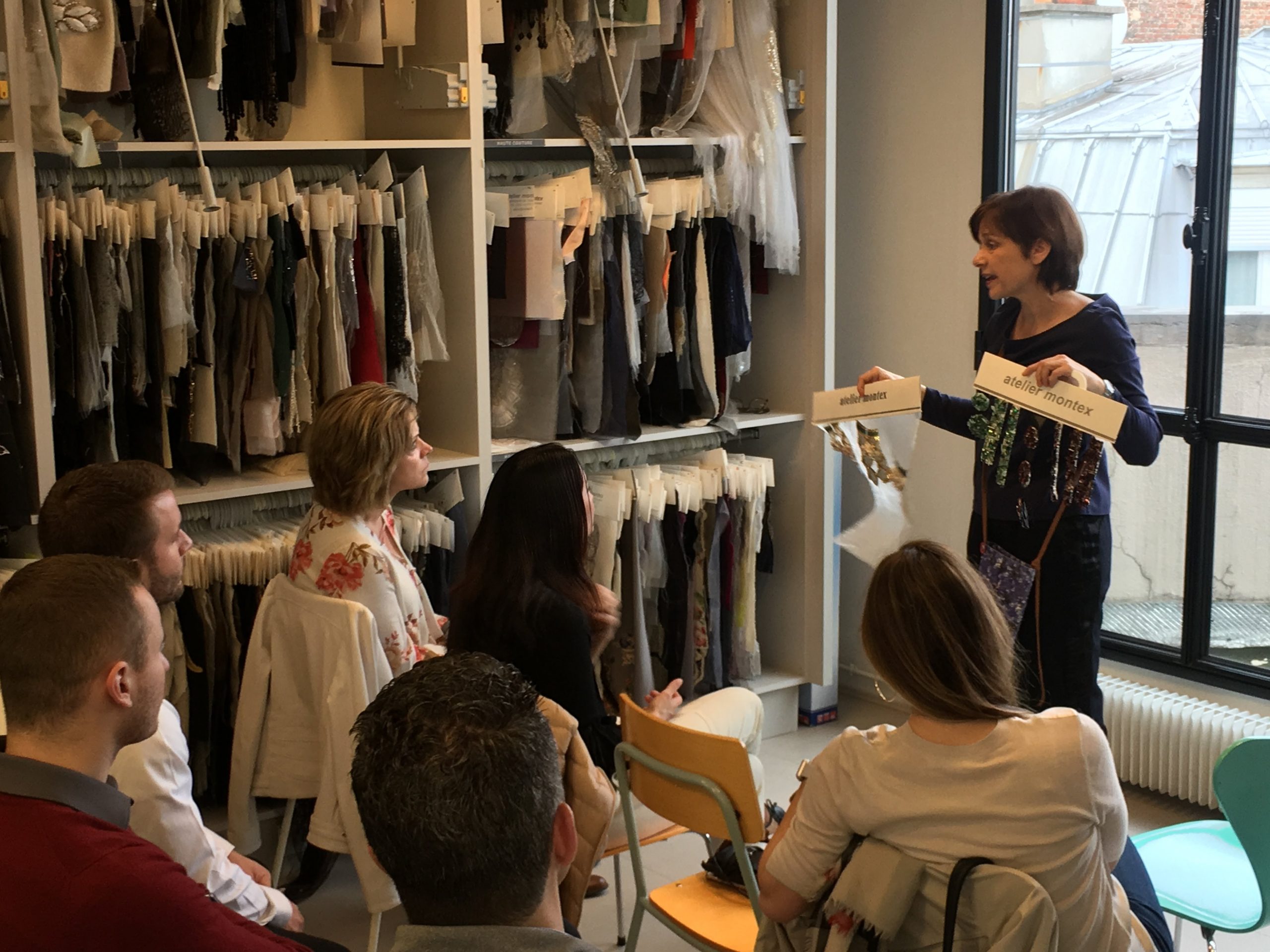Tradition and Innovation in French Fashion

For years, the Chanel brand has built its success, in part, on partnerships with a series of much smaller, boutique artisan maisons. Whether through intricate embroidery, delicate featherwork, or the manufacture of sophisticated buttons, each maison applied generations of artisan expertise in order to build one of France’s most iconic brands.
Today, Chanel has acquired eleven of these maisons in the Paris suburb of Pantin in order to protect their artistry at a time when the small-scale workshops struggled to adjust their strategy and attract new talent to keep pace with changing times. Though Chancel is now a parent company, each shop keeps a full portfolio of clients and complete creative independence, finding inspiration in tens of thousands of archived pieces from more than a century of creative work.
In March, MBA students from the Krannert School of Management at Purdue University visited the workrooms of Atelier Montex, one of the eleven maisons now under Chanel’s wing. Montex was founded in 1939 and specializes in architectural embroidery with the tambour or Lunéville beading technique and has exceptional expertise in the use of Cornely sewing machines, a rare French machine developed especially for embroidery in the 19th century.
During the visit, the group met with Maria Roques, who has led Atelier Montex as director for nearly twenty years. She introduced students to the world of haute-couture and discussed some of the strategic challenges that workshops like hers face in their operations. The discussion was followed by a private tour of the facilities, allowing the students to observe the different generations-old techniques firsthand. The visit challenged the MBA students to consider themes such as sourcing, labor, and production in the unique cultural and historic context of French fashion.